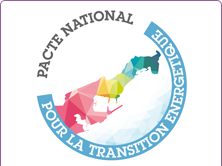Solar photovoltaic panels
A short story
The Earth receives valuable energy from the sun. In one year, the sun’s radiation is more than 10,000 times annual energy consumption, regardless of usage.
The word "photovoltaic" is made up of a combination of two words: "photo" comes from Greek and means "light", while "voltaic" derives from "volt", the unit used to measure electric potential.
Photovoltaic energy generates no noise, no harmful emissions and no polluting gases, unlike the burning of fossil fuels, which produces carbon dioxide, a greenhouse gas that contributes to climate change. For this reason, the Principality of Monaco considers photovoltaic to be an extremely interesting source of energy, and has for several been investing to expand its use within the country.
How do they work?
Photovoltaic systems use cells to convert solar radiation into electricity. These cells are made up of several layers of a semiconductor material, most often silicon. An electrical field is created between the layers as the light hits the cell, which initiates the electric flux. The more intense the light, the higher the electric flux. However, daylight is sufficient to activate the process of producing electricity, even if the sun is obscured by a few clouds. The Principality of Monaco has already installed more than 2,000 square metres of solar photovoltaic panels. The Neptune building opposite the Louis II Stadium has a roof made entirely of photovoltaic panels.
Photovoltaic panels can be installed on roofs, taking account of shading caused by the environment. However, new solutions are being developed to integrate cells as part of wall cladding, tiles, glazing and fittings, for example.
Solar resource map of the Principality
A solar resource map is accessible to all! Everyone can find out the solar energy potential of their home, as well as the efficiency of the energy produced in relation to the building’s exposure to the sun. The map is a highly innovative tool which has been made available to residents of the Principality. Very few cities in Europe have anything like it. More information on the website www.cadastresolaire.mc
Will it be possible to consume the electricity my building produces?
Building owners may consume their own electricity or feed it into the photovoltaic electricity grid. In other words, buildings can produce electricity for their own use and/or produce energy for others. The electricity produced can also be stored in a battery for later use.
Savings
The initial investment, while it may appear substantial, is very easily recouped within ten years. The Prince’s Government grants aid for every solar kilowatt hour (kWh) produced by installations with a capacity of more than three kilowatt-peaks (kWp) (20 square metres of solar panels). In addition, consuming the electricity produced by the building makes it possible to save between 30% and 100% every year on purchasing electricity from the grid. More information on: www.cadastresolaire.mc/suivez-le-guide
How much do they cost?
The cost of installing solar panels varies depending on the quality of the equipment and photovoltaic cells, as well as the complexity of the installation. To give an example, you should allow between €15,000 and €25,000 to meet the requirements of a 100-square-metre home.
Good to know
Reliable and effective systems!
Photovoltaic systems are highly reliable. The life span of a solar panel is around 30 years, and the performance of cells is usually guaranteed by the manufacturer for a period of between 20 and 25 years. After that, capacity remains above 80% of initial capacity, making such systems an extremely reliable means of generating electricity over the long term, all the more so because there are very high quality standards in place at the European level. The recycling of panels is a booming industry, and all elements of such systems can be processed: the glass, the cells and the electrical connections.
Manufacturers of photovoltaic panels pay an eco-tax to an organisation which is responsible for recycling panels when they reach the end of their lives.


[#YourMonaco]
— Gouvernement Monaco (@GvtMonaco) July 31, 2020
La Principauté se dote d'un nouvel outil de communication urbaine. https://t.co/5f1DsYi2No








